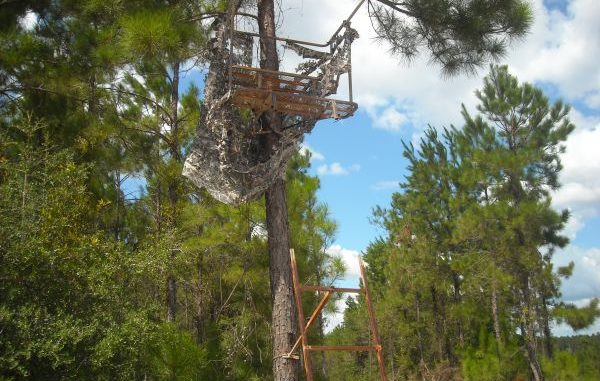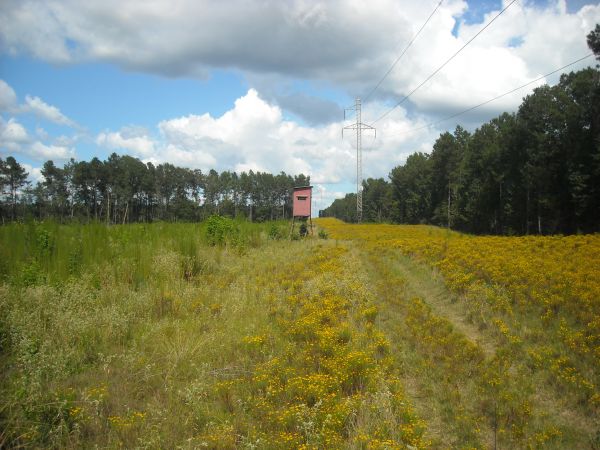
Hunter safety should always be top of mind
During summer boating season, we took a look at boating safety and a few aquatic do’s and don’ts aimed at getting us off the water safely.
Now, here we are in the fall and kicking off another hunting season. So why not discuss a few precautions and think about potentially dangerous situations we can avoid with a little forethought and planning?
Structured training and certification are good, and everyone should complete the Hunter Education Course. The ATV Rider Safety Class is another must for anyone who operates offroad vehicles. We should also read and adhere to all the safety rules found in the literature provided with deer stands, archery gear, camping equipment and everything else we use as hunters and outdoorsman.
But I am also a firm believer in lessons learned from real outdoor experiences. Sometimes accidents result from actions or situations where no one would have suspected danger. And sometimes the potential danger was evident, but no one did anything about it.
So with that in mind, let’s take a look at a few real life accidents and how they could have been avoided. We will also look at potentially dangerous situations we now recognize due to our “take-away” from experience.
Bullet trajectory and what lies beyond the intended target are factors frequently overlooked, even though they are the cause of serious accidents and fatalities.
A few years ago, the victim of a shooting accident went to clean and check his box stand on a power-line right-of-way running through his hunting lease.
He noticed that, on the adjoining property, someone had placed another box stand on the right-of-way on the opposite side of the opening. A ridge ran across the right-of-way between the two stands, which meant that a shot fired at game on top of the ridge was pointed straight at his stand.
Concerned, he contacted someone he knew at the neighboring lease, and was directed to the owner of the new stand. They talked it over, and the other hunter initially agreed to relocate his new stand to a safer position, but failed to follow through.
A few days into the season, the victim went to his stand for a morning hunt. At daybreak, he saw the other stand had not been moved. But since he had talked to the other hunter and called the problem to his attention, he felt safe in remaining in the stand and completing the hunt.
You know the rest. A deer walked out on the ridge between the stands. The other hunter fired, missing the deer but put the bullet right through the wall of the box stand — into the arm of the victim between elbow and wrist.
The victim was injured, but he could have been killed just as easily.

The danger in this case was very obvious, and it could have been easily avoided.
But the threat is not always so easily spotted. The majority of hunting leases have rules requiring stands to be agreed-upon distances apart, and many adjoining leases have gentlemen’s agreements on keeping stands a prescribed distance from shared property lines.
But those rules don’t guarantee safety, so be sure to determine where any shot fired from your stand could end up and change locations anytime roads, dwellings or other stands are down range of your position. Make sure your stand location doesn’t put you in someone else’s line of fire, too.
Basic firearms safety tells us guns should be unloaded at all times, except while we are actually hunting. But we all know, like it or not, people keep guns loaded and transport them in vehicles, boats and ATV’s. Worse yet are people who keep loaded guns in camp or wait until returning to camp to unload.
A case in point was an incident I witnessed at our own hunting camp. A member and his guest drove up after a morning hunt and stepped out of the truck. At this point, the guest decided to unload his rifle and began doing so while standing on the passenger side of the truck right in front of the camp.
The rifle went off, sending a round into the dirt at his feet. Several people were present, and we were lucky no one was hurt.
We don’t forbid anyone from bringing an unloaded firearm into the camp house, but do prefer leaving all guns stored in the vehicles, thank you very much. I realize potential theft or other factors might not make this a practical solution for everyone, but it works well for us.
Ever hear the one about the priest, the minister and the rabbi sitting on a park bench discussing the best way to pray? The priest said kneeling was best, while the minister preferred standing with hands raised to heaven. The rabbi preferred bowing in reverence with hands folded. A telephone repairman was working nearby and listening to the conversation. He offered that the best praying he had ever done was while hanging upside down from a telephone pole.
I know at least one deer hunter who would agree with the phone man.
This hunter, named David, was using a climbing stand for an afternoon hunt. His rifle was slung on his back as he went up.
Suddenly, the seat portion of the stand broke loose. He went over backwards and found himself hanging upside down by one foot from the platform half of the stand.
Nearly passing out from the pain of the badly twisted ankle, he managed to get his rifle unslung and began firing off rounds. He had only walked a short distance from camp, and a buddy heard the shooting and quickly came to the rescue.
David believes if he had lost the rifle in the fall or been unable to fire signal shots — and had help not gotten there quickly — he would have died. It is a distinct possibility.
I don’t think David uses climbing stands anymore.
Treestand Manufacturers Association approved safety harnesses are a must for any elevated climbing or ladder stand, but don’t stop there. Bring along the cell phone or a two-way radio and have a plan for getting help if needed. Let someone know where you will be hunting, and be sure they will come looking for you should you fail to return.
Falling isn’t the only problem. We have all heard stories or even experienced ourselves the dilemma of getting stranded up a tree. Drop the foot platform of that climbing stand while high up the tree, and you aren’t going anywhere. I admit it’s happened to me not once but twice.
I’m much better about attaching the retainer on the seat frame to the platform now.
I’ve also had the experience of losing a section of ladder from a ladder stand. The wind rocked the tree hard enough to pull the sections apart, and the upper one fell away.
Fortunately the seat was securely strapped to the tree, so it was just embarrassing.
So kick your hunting season off with a few common-sense precautions, and think things through with your and everyone else’s safety in mind. We want the hunt to end out by the skinning rack, not with a trip to the emergency room.


